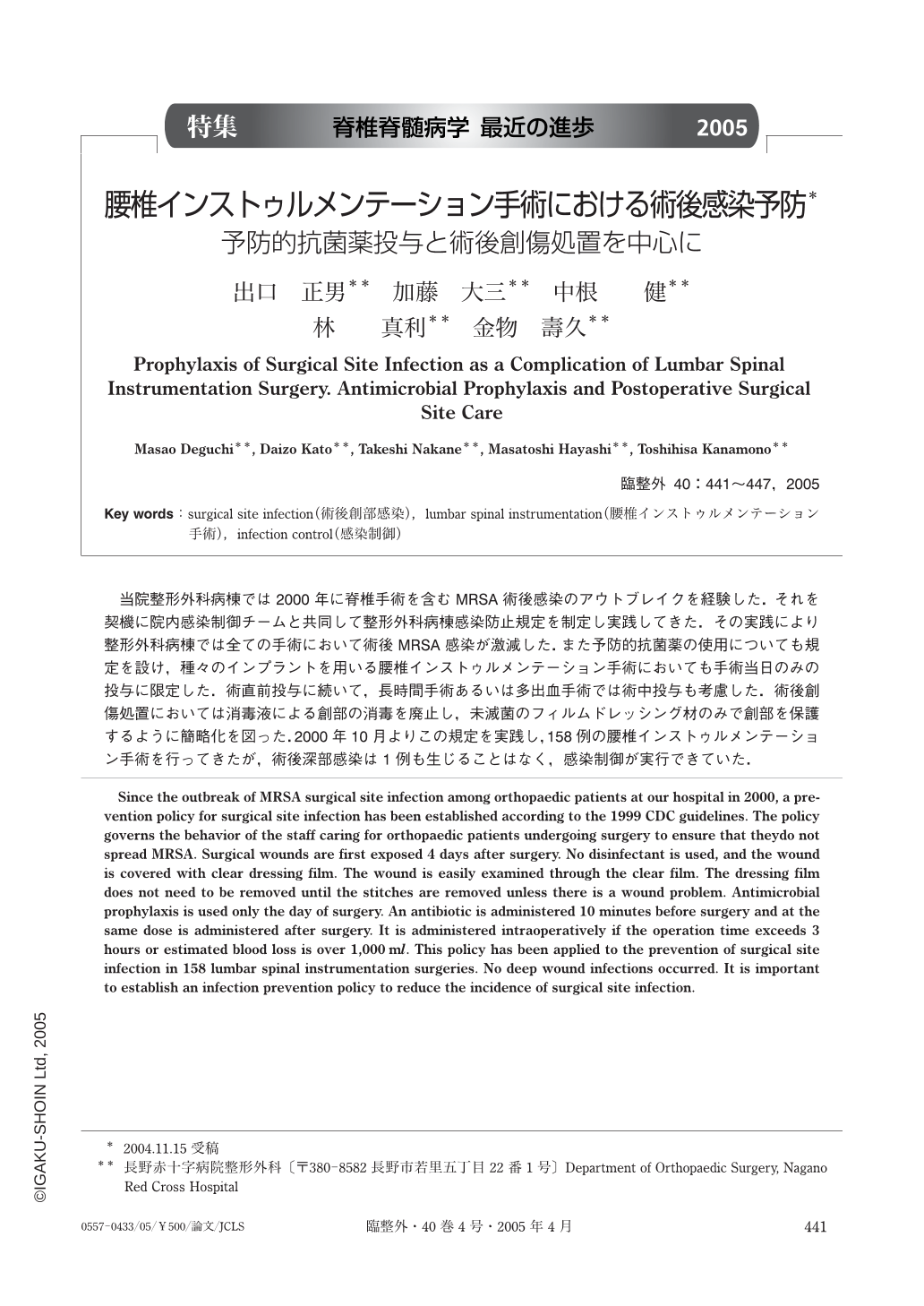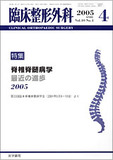Japanese
English
- 有料閲覧
- Abstract 文献概要
- 1ページ目 Look Inside
当院整形外科病棟では2000年に脊椎手術を含むMRSA術後感染のアウトブレイクを経験した.それを契機に院内感染制御チームと共同して整形外科病棟感染防止規定を制定し実践してきた.その実践により整形外科病棟では全ての手術において術後MRSA感染が激減した.また予防的抗菌薬の使用についても規定を設け,種々のインプラントを用いる腰椎インストゥルメンテーション手術においても手術当日のみの投与に限定した.術直前投与に続いて,長時間手術あるいは多出血手術では術中投与も考慮した.術後創傷処置においては消毒液による創部の消毒を廃止し,未滅菌のフィルムドレッシング材のみで創部を保護するように簡略化を図った.2000年10月よりこの規定を実践し,158例の腰椎インストゥルメンテーション手術を行ってきたが,術後深部感染は1例も生じることはなく,感染制御が実行できていた.
Since the outbreak of MRSA surgical site infection among orthopaedic patients at our hospital in 2000, a prevention policy for surgical site infection has been established according to the 1999 CDC guidelines. The policy governs the behavior of the staff caring for orthopaedic patients undergoing surgery to ensure that theydo not spread MRSA. Surgical wounds are first exposed 4 days after surgery. No disinfectant is used, and the wound is covered with clear dressing film. The wound is easily examined through the clear film. The dressing film does not need to be removed until the stitches are removed unless there is a wound problem. Antimicrobial prophylaxis is used only the day of surgery. An antibiotic is administered 10 minutes before surgery and at the same dose is administered after surgery. It is administered intraoperatively if the operation time exceeds 3 hours or estimated blood loss is over 1,000ml. This policy has been applied to the prevention of surgical site infection in 158 lumbar spinal instrumentation surgeries. No deep wound infections occurred. It is important to establish an infection prevention policy to reduce the incidence of surgical site infection.

Copyright © 2005, Igaku-Shoin Ltd. All rights reserved.


